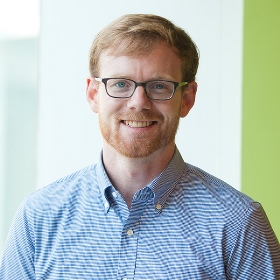In communities across the United States, a wide range of parenting programs support low-income new mothers. Some new moms might need help learning how to breastfeed and care for their babies; others may face challenges involving mental health or substance use. Yet there is rarely any mechanism in place to ensure that mothers enroll in the program that provides the level of support they need. Often they end up in programs that provide far more, or not nearly enough.
How do we achieve impact at a scale that meets today's enormous needs? Explore Bridgespan research, insights from leaders, and more on the Transformative Scale Resource Center.
Visit the Resource CenterThis mismatch is not limited to services for new mothers. It happens too often in other fields, such as healthcare, homelessness, and prison recidivism. And it poses a new challenge to the social sector. After more than a decade of intense effort to develop programs that work, it’s time for the sector to take the next step and learn how to deliver those programs to the right people. If that sounds like a no-brainer, think again.
To date, the social sector has limited experience matching beneficiaries with appropriate services. But the true promise of the “what works” movement won't be fulfilled until more and better mechanisms exist to match beneficiaries with appropriate evidence-based programs. By offering higher-cost and more intensive services only to the highest-risk beneficiaries and less intensive services to those with lower levels of need, funders can achieve greater social returns on their investments. Achieving that goal will likely require intermediary organizations that (1) identify and attract providers of a spectrum of effective interventions for varying levels of need in a community, and (2) learn how to cost-effectively screen and match beneficiaries to the appropriate services. For many social services, it is hard to imagine achieving impact at a transformative scale without such a function working effectively.
One instructive example of what it takes to match beneficiaries with the appropriate level of service is happening today in Durham, NC. There, Durham Connects (also known as Family Connects) is pioneering an intake system that links families with newborns to the programs that best meet their needs. It begins with a case worker in the hospital who meets with every new mother in Durham County immediately after birth and schedules a home visit. During that visit, a Durham Connects nurse assesses the family and determines if they need either no supports, light-touch support that can be delivered in one or two home visits, or a referral to a program in the community for sustained support. The nurse then connects the family with the appropriate providers and follows up to assess the family’s progress.
A 2013 evaluation found that the added cost of deploying Durham Connects nurses to assess and refer moms to other programs more than paid for itself, with estimated healthcare savings of $3 in the child’s first six months for every $1 spent on Durham Connects. Participating families demonstrated improved parenting practices, lower rates of maternal anxiety, and higher quality home environments. In other words, effective matching led to both better outcomes for new mothers and better economics overall.
If the results and economics are so compelling, why aren’t we seeing more screening and referral organizations like Durham Connects? One reason is that many communities lack the full continuum of services to which families with varying needs could be referred. In Durham, it took 10 years of dedicated effort to build the network of service providers to which Durham Connects refers families.
In communities where enough service providers are active, getting buy-in from those providers can also pose a significant challenge. A centralized intake and screening model can take away much of a provider’s control over their own recruiting and case volume. Only by proving that the centralized intake model can deliver a sufficient volume of referrals, and that families getting referred are indeed the “right fit” for the program, can providers be motivated to join a coordinated effort.
There’s also a data infrastructure challenge. It takes a robust one to implement this approach, so the central referral hub can continuously improve its screening and referral protocols, and measure its impact. But developing that infrastructure can be daunting—and expensive.
While there is no doubt that challenges exist, funders today have an opportunity to help catalyze more success stories like Durham Connects in communities across the country. As more communities gain experience with developing a centralized matchmaker, the pathway to building such models will become clearer for others to follow. If the results in Durham County are any indication, the potential benefit to families more than outweighs the risk funders take in advancing this promising social innovation.
(Note: There are a number of other efforts underway that are pioneering approaches to screening and matching, including the Children’s Services Council of Palm Beach County’s Healthy Beginning System, and Community Solutions and Palantir’s Homelink platform.)
Sam Whittemore and Mike Levine are consultants in The Bridgespan Group’s Boston office.
More from the blog


